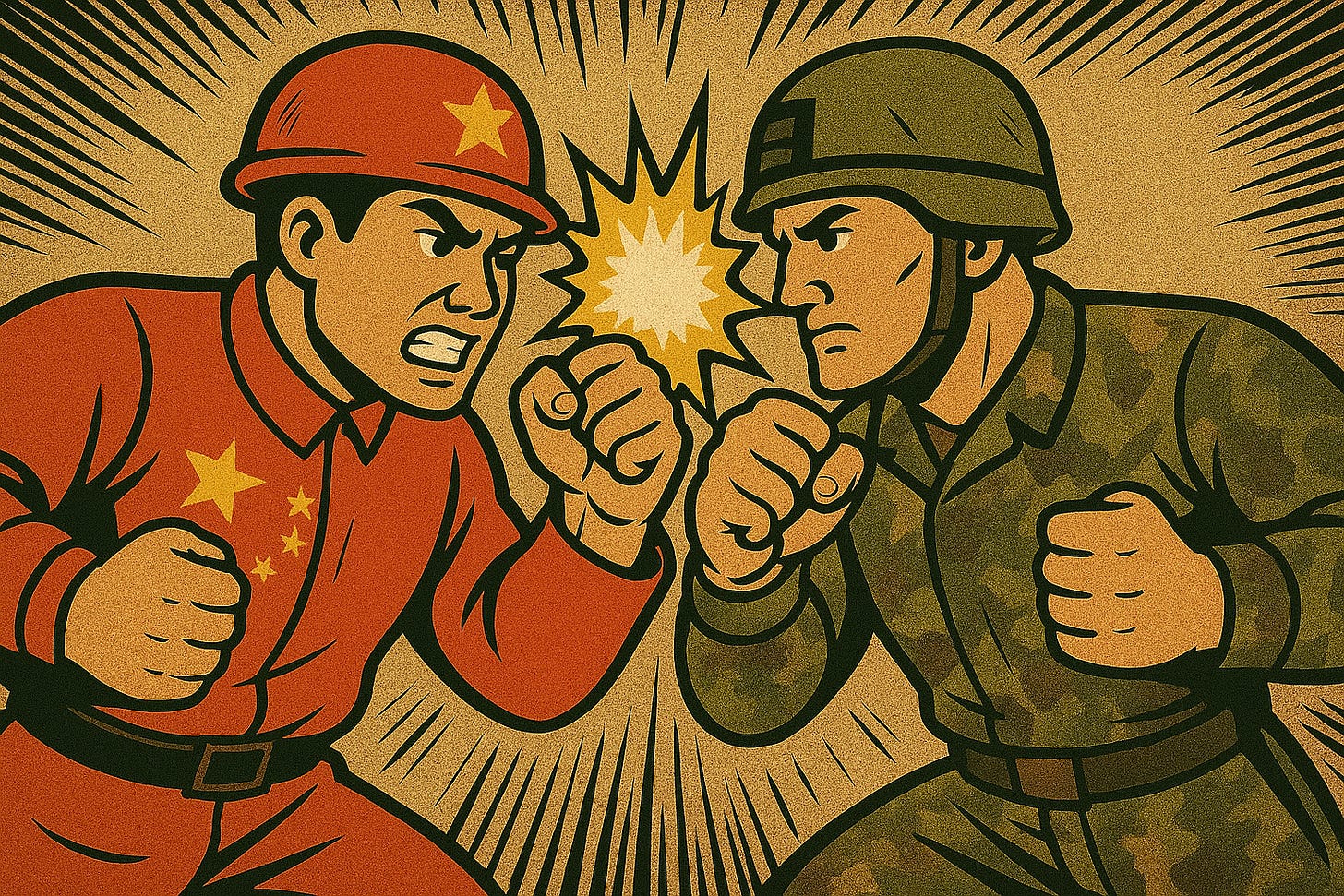Trade War Shockwaves: Tariffs and Tech Bans Strain China’s Military and U.S. Defense Firms
Economic Conflict Hits the Arsenal
The escalating U.S.–China trade war has spilled over into the defense sector. By mid-2025, tit-for-tat tariff hikes and export controls have effectively decoupled critical supply chains, with punitive tariffs soaring above 50% and even into triple digits on each side. Beijing and Washington are targeting each other’s technological underpinnings: the U.S. aims to choke off China’s access to advanced semiconductors and aerospace inputs, while China is leveraging its dominance in rare earths and other materials to squeeze U.S. industry. This report examines how the tariff escalation and associated tech sanctions are undermining China’s defense industrial base – especially dual-use firms supporting the People’s Liberation Army (PLA) – and how China’s countermeasures are straining U.S. defense contractors. We analyze impacts across the PLA’s branches (from Ground Forces to Rocket Force, Navy, Air Force, and C4ISR logistics) and assess implications for military modernization and potential conflict scenarios like a Taiwan invasion. We also identify major U.S. defense companies (with ticker symbols) exposed to Chinese supply disruptions in rare earth elements, electronics, and other dual-use components, and consider how supply chain fragility could hinder production of aircraft, missiles, ships, and more. Finally, we discuss the broader policy ramifications of this “economic war” on defense postures, technology decoupling, and strategic planning in both countries.
China’s Defense Industrial Base Under Tariff and Tech Pressure
The PLA has long pursued Military-Civil Fusion (MCF) – harnessing civilian industries and advanced technology for military purposes – making many Chinese tech firms de facto dual-use suppliers for defense. U.S. trade measures now directly threaten this model. Over the past few years, Washington has increasingly restricted Chinese access to cutting-edge tech: for example, sweeping export controls in October 2022 banned China from acquiring advanced semiconductor chips, chip-making equipment, and expertise. These controls are explicitly aimed at degrading the PLA’s modernization, freezing China’s chip capabilities at 2022 levels and impeding military development in areas like artificial intelligence, hypersonic weapons, and secure communications. As a result, Chinese semiconductor firms and dual-use tech companies have been hard-hit. SMIC (Semiconductor Manufacturing International Corp.), China’s largest logic chipmaker, lost access to critical U.S. equipment and even routine machine maintenance under the new rules. U.S. toolmakers (Applied Materials, Lam Research, KLA) halted support to Chinese fabs, and even third-country suppliers like Netherlands-based ASML pulled U.S. staff from servicing China’s facilities.
In effect, Washington has cut off the “silicon oxygen” for China’s high-end tech industry, hampering the PLA’s ability to procure advanced processors and components for its weapons.
China has weaponized its dominance in rare earth elements, as seen with workers preparing rare earth ore for export. In April 2025, Beijing imposed new export controls on rare earth magnets to retaliate against U.S. tariffs, squeezing the West’s supply of minerals crucial for weapons, electronics, and other high-tech goods. This move highlighted China’s leverage over critical mineral supply chains.
Keep reading with a 7-day free trial
Subscribe to Talon Black to keep reading this post and get 7 days of free access to the full post archives.



